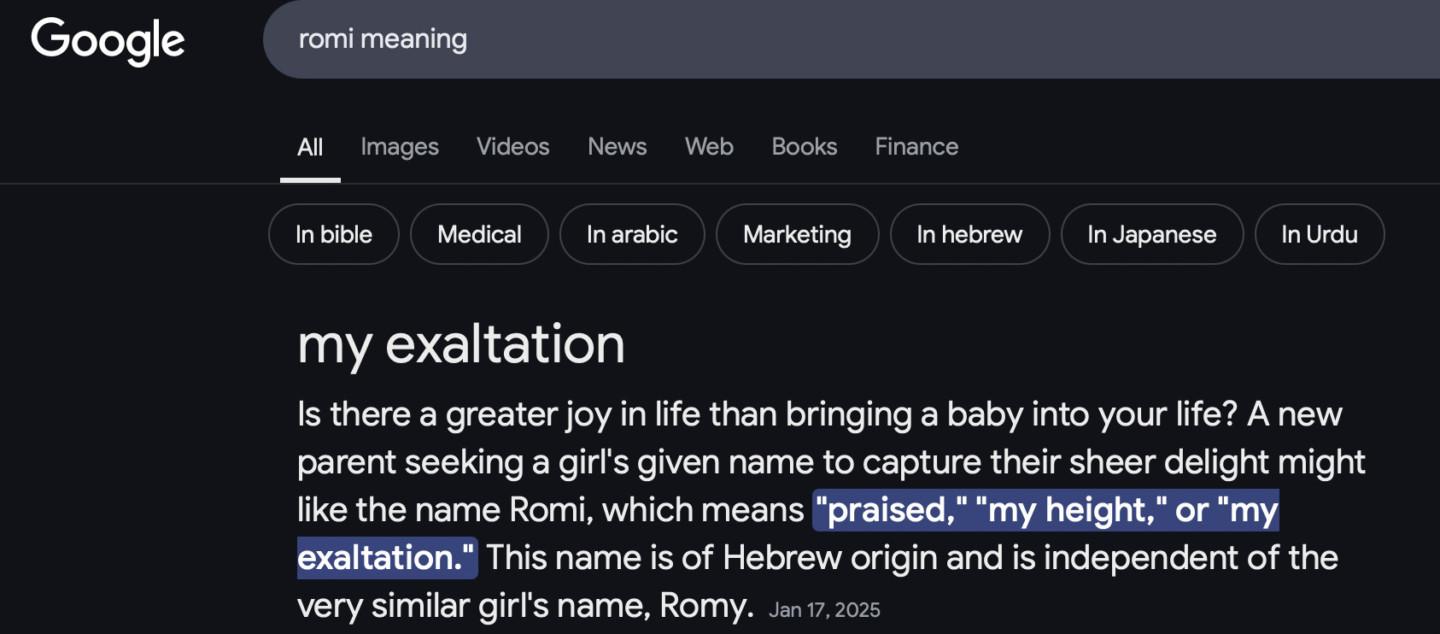The ROMI Formula: How To Calculate It? Real case

This is the updated version of an article originally posted in November 2020.
Which ROMI is good? What does a 100% ROMI mean? What is teh ROMI formula? How do you calculate ROMI? Why is the ROMI important to know and what should you do after you calculate it? Stay tuned to find out!
The ROMI formula helps you measure the return on your investments in marketing. This is one of the most important marketing KPI. In this article, we’ll figure out how you can use this metric to evaluate your marketing performance. You’ll also know how to calculate and use it to enhance your business.
What’s the ROMI?
By googling “what is romi” you’ll definitely find smth like ROMI stands for Return on Marketing Investment. This metric shows how cost-effective your marketing investments are. You’ll see how well your ads, SEO, emails, and blog pay off. The ROMI only takes marketing expenses into account. It doesn’t consider production costs, payroll, and rent.

Let’s say we’re making designer lamps and promoting them on Instagram. We also send emails. We’ll use the ROMI formula to see which channels are cost-effective and which are not. We’ll see how much money each dollar invested makes.

Why calculate the ROMI?
The ROMI aims to measure how marketing investments influence your revenue. Using the ROMI, you can evaluate which promotion tools are profit-making and which are loss-making.
Here is why calculating ROMI is a game-changer:
- Know What’s Working — ROMI marketing helps you see which campaigns bring real results and which ones are just burning cash.
- Optimize Your Budget — A ROMI calculator lets you allocate funds smarter, focusing on high-performing strategies.
- Justify Your Spend — When you calculate ROMI, you have solid data to back up your marketing decisions. No more guesswork!
- Boost Profitability — Higher ROMI = better returns, helping your business grow without wasting resources.
- Make Data-Driven Decisions — Instead of going with gut feelings, use ROMI insights to fine-tune your marketing game.
Basically, if you’re not tracking ROMI, you’re flying blind.
You can reallocate your budget into more cost-effective campaigns when you see how much you spend on advertising and what revenue it generates.
The ROMI formula
Every business is different in the way they calculate the ROMI. The return on marketing investment formula depends on what exactly you want to find out. The basic ROMI formula is this:

Surely there are return on marketing formula variations like:

and

Let’s calculate the ROMI using our designer lamp case. We launched ads on Instagram, and we also launched emails. Using Google Analytics, we can obtain the data we need to calculate the ROMI.
Ad campaign
Emails
Google Ads
Campaign revenue, $
242
41
16
Campaign costs, $
68,5
22,5
69
ROMI
253%
82,2%
-76,8%
Thanks! Now check your inbox

The ROMI calculation of Instagram ads
Let’s say customers from Instagram bought 30 lamps for $14 each. The net cost of one lamp is $5. The income generated is $270.
(14 — 5)*30 = $270
Then let’s deduct the number of advertising expenses from income: 270 — 69 = $201.
Then we divide the number obtained by the number of advertising expenses and multiply by 100%:
201 / 69 * 100 = 291,3%
The ROMI is 291,3%, meaning that Instagram ads are cost-effective as they generate about 2,9 dollars for each dollar invested.
How do you calculate ROMI of emails
Suppose customers bought five lamps after they got emails from you. The income generated is 45$.
(14 — 5) * 5 = $45
Then, deduct advertising expenses from your income: 45 — 23 = $22.
Divide the number obtained by the number of advertising expenses and then multiply by 100%:
22 / 23 * 100 = 95,6%
The ROMI of 95,6% means emails are not cost-effective, but at least we managed to recover our investments.
How do you calculate ROMI of Google Ads
Let’s say customers we acquired via Google Ads only bought 2 lamps. Your income is $18.
(14 — 5) * 2= $18
Deduct the advertising expenses from the income: 18 — 69 = −$51.
Divide the number obtained by the number of advertising expenses and then multiply by 100%:
-51 / 69 * 100 = −73,9%
The negative ROMI means we earned less than we spent. This is bad.
We found out that Instagram ads were cost-effective while other channels were not. The ROMI demonstrates how various campaigns influence your sales. It lets you quickly optimize your advertising and invest in more cost-effective channels.
How high should the ROMI be?
Ideally, the ROMI should exceed 100%. This will mean that your advertising generates profits, each invested dollar pays off and generates income.
- The ROMI of 100% is a breakeven point. This value means that your investments pay off without any profit.
- Your marketing investments don’t pay off if your ROMI is below 100%.
- The zero ROMI means you didn’t generate any profit and broke even.
- The ROMI can also be negative up to −100%. In this case, it means you earned less than you invested.
In some cases, ROMI skyrockets. Check out the case of our EdTech customer that invested in chatbots and achieved 16,000% ROMI. Their Dashly subscription paid off in just five leads!
You can get significant ROMI figures for the marketing activities such as lead generation, customer engagement, or conversion rate optimization too!
Who should calculate the ROMI and when?
The ROMI is calculated where the outcome isn’t bound to any variables. Most often, it’s calculated where it refers to direct sales of goods and services. This metric allows you to evaluate the cost-effectiveness of your marketing activities and make managerial decisions. For instance, you can evaluate the performance of a particular promo. However, the ROMI formula doesn’t take long-term brand value into account.
Sometimes you cannot relate a campaign to achieving specific goals. A customer can see your ads, visit your website, and close the tab. That same customer can again find your website using a search engine and make a purchase. If that’s the case, your ads worked, though you won’t see it in your analytics.
You can’t always tell which messages were appealing and led to specific user actions, especially if you run multiple campaigns simultaneously.
When calculating the ROMI, consider all factors influencing your sales. Suppose you launched ads, and your best sales rep decided to quit, or you faced supply issues. In that case, your ROMI may decrease, though it has nothing to do with your ad campaigns.
If you are in real estate, auto business, or selling expensive household appliances, we don’t suggest you rely on the ROMI. Customers may see your ads in these industries and only purchase in several months. You’ll account for marketing costs in one month and the income in another. The ROMI may differ depending on the reporting period and won’t show an accurate picture.
I’ve made my ROMI calculations. What’s next?
Suppose you figured out what channel performs best in your business. Now you can reallocate your investments into more cost-effective channels.
If you know your ROMI value, you can calculate your perfect cost-per-click, product price, average order value, and sales value to ensure your investments pay off.
How to calculate the ROMI online
The major advantage of the ROMI formula is that it’s easy to calculate. However, you may miss some marketing expenses or get confused. These slips may influence your calculations dramatically, and you may get unreliable data. Use online calculators or Excel spreadsheets to mitigate these risks.
There are numerous ROMI calculators on the Internet. They are simple and need your marketing expenses and revenues to calculate the metric. Here’s an example of a Captain Calculator:

And here is Dashly ROMI calculator:
Thanks! Now check your inbox

Are ROI, ROMI, and ROAS different?
The ROMI is often mistaken for ROI and ROAS. Let’s figure out why these metrics are different.
ROI is the return ratio of all investments. Unlike the ROMI, which only considers marketing expenses, the ROI helps you evaluate the overall profitability of your project considering all investments. You need to consider all project expenses and revenues it generates to calculate the ROI.

ROAS (Return on Advertising Spend) is the return ratio of your advertising expenses. It only considers your expenses on particular advertising campaigns. The primary objective of this formula is to find out if a company makes profits using particular marketing tools.

It’s essential not to mistake the ROMI, ROI, and ROAS for one another, as it may lead to grave mistakes. If the ROMI and the ROI equal 100%, it means that you earned twice as much as you spent. If the ROAS is 100%, you only paid off your expenses but made no profit.
Get your copy of the ROMI calculator
ROMI is essential for the assessment of your marketing activities. It helps you figure out what works and what doesn’t, so you can eliminate failed ideas and scale the successful ones.
Skyrocket your return on marketing investment (ROMI) with Dashly
Dashly’s tools enhance Return on Marketing Investment (ROMI) by streamlining marketing investment decisions using real-time marketing data.

Here’s how:
- Lead Generation: Automate and target your campaigns with pop-ups, chatbots, and emails to capture more leads.
- Personalization: Use visitor data to tailor messages and offers for higher conversion rates.
- Lead Qualification: Prioritize hot leads and pass them to sales for faster deal closures.
- Data Tracking: Monitor visitor behavior and adjust campaigns in real time to improve ROI.
- A/B Testing: Test and refine your campaigns without needing developers.
Start optimizing your marketing efforts today with Dashly!
FAQ on return on marketing investment
Return on Marketing Investment ROMI definition basically means the return ratio of your marketing investments. The ROMI only considers marketing expenses and does not take production costs, payroll, and rent into account. So it’s essential for your marketing team.
To calculate the ROMI, deduct your marketing expenses from the income generated from your campaigns, then divide the number by your marketing expenses and multiply the result by 100%. Take all your marketing expenses into account, or you’ll get an unreliable result.
Calculate the ROMI when no dramatic change happens in your company. Otherwise, you won’t know for sure what affected the results: your initiatives like marketing automation or major changes in the business.
Calculating ROMI is easy. Here is the return on marketing investment formula: ROMI = (Marketing revenue — Marketing expenses) / Marketing expenses * 100%.
See our article on ROI formula to learn more about other important metrics.
Measuring Return on Marketing Investment (ROMI) is crucial for evaluating campaign effectiveness and optimizing budgets. ROMI calculation helps businesses determine profitability, refine strategies, and justify marketing spend. By tracking ROMI, companies ensure resources drive real revenue growth, improving overall marketing efficiency and decision-making.
To calculate marketing expenses, add up all marketing spend, including ads, content creation, tools, salaries, and agency fees. Factor in media attribution to track which channels drive sales. Review marketing budgets regularly to ensure cost efficiency. A clear expense breakdown helps optimize campaigns and maximize ROI.
To calculate the total cost of your marketing activity, add up all expenses related to your efforts, including ad spend, content creation, software, salaries, and agency fees. Factor in hidden costs like discounts or promotions. Then, compare this against sales generated to measure profitability. Tracking all costs ensures smarter budget decisions and better ROI.
Here is a quick guide to return on marketing investment analysis:
1. Gather Data — Track all marketing efforts and costs, including ads, tools, salaries, and content.
2. Calculate Total Investment — Sum up your total marketing investment for the period.
3. Measure Returns — Calculate revenue from marketing-driven sales within the same term (month, quarter, year).
4. Apply the Formula — Use: ROI = (Revenue−TotalMarketingInvestment)/ Total Marketing Investment x 100%
5. Analyze & Optimize — Identify high-ROI efforts and adjust strategies to maximize returns. 🚀
Mix Modeling evaluates multiple marketing channels to understand their impact using historical data and statistical analysis. The ROMI Model, on the other hand, specifically measures the return on a marketing investment by comparing revenue generated to costs. While both are useful, Mix Modeling helps optimize the overall marketing model, while ROMI focuses on individual campaign profitability.
The main benefit of Return on Marketing Investment (ROMI) is that it helps businesses measure the effectiveness of their marketing investment. By calculating ROMI, companies can identify which campaigns drive the best returns, optimize marketing spend, and justify budgets. It ensures that resources are allocated to high-performing strategies, boosting profitability and aligning marketing efforts with business goals. Ultimately, it helps maximize ROI and improve decision-making.
Let’s say your company spent €10,000 on a marketing campaign. The campaign generated €30,000 in revenue.
To calculate ROMI Subtract the marketing spend from the revenue:
€30,000 (revenue) — €10,000 (marketing spend) = €20,000.
ROMI calculation: ROMI = (20 000 / 10 000) x 100% = 200%
This means for every €1 spent, the company earned €2 in return.
Return on Marketing Investment (ROMI) is a metric used to measure the profitability of marketing efforts. It calculates the revenue generated from marketing campaigns compared to the costs of those campaigns. ROMI helps businesses assess the effectiveness of their marketing investments and determine which strategies are delivering the best returns. The higher the ROMI, the more efficient and profitable the marketing activities are.
To measure Return on Marketing Investment (ROMI), follow these steps:
Calculate Total Marketing Costs: Add up all expenses related to the marketing campaign (e.g., ads, content, salaries, tools).
Track Revenue Generated: Measure the revenue directly linked to the marketing efforts, such as sales or leads resulting from the campaign.
Use the ROMI Formula: ROMI = (Revenue — Marketing Costs) ÷ Marketing Costs × 100%
Interpret the Result: The higher the ROMI percentage, the more effective your marketing investment is in generating revenue.
Further reading on marketing metrics
- The ROI formula: How to Calculate It and Why Your Marketing Needs It
- Calculating the LTV: Why Is This Metric Special and Why Do You Need It?
- ARPU: definition and calculation
- The best way to collect emails: 5 top-notch methods unveiled
- 3-step guide on inbound lead qualification: how to qualify inbound leads on autopilot
- Choose your ideal lead nurturing platform: Top 10 software tested by experts




![21 proven tools for your 2025 marketing tech stack [Recommended by market experts]](https://www.dashly.io/blog/wp-content/uploads/2022/08/martech-stack-999-720x317.png)
